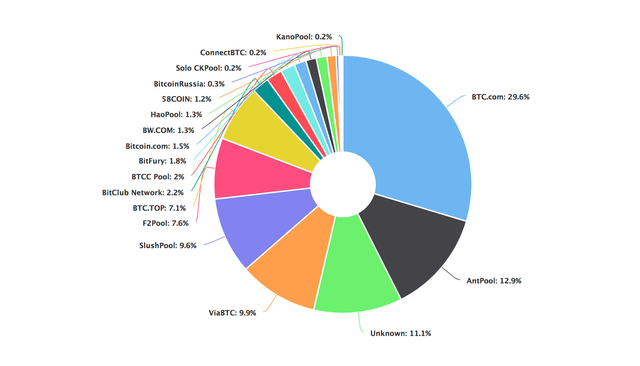
Choose the right payment methods that suits your order can greatly affect your profit. To understand the three kinds of methods, you have to know the meaning of the factor “luck”.
The mining process is affected by probability. So in the short term, the actual benefits you get will be very different from the expected benefits. The ratio of the two is called the value - “lucky”. The lucky value is greater than 100%, indicating that the actual profit of the mining pool is greater than the expected profit, and you could make more profit. Less than the opposite. But no matter how lucky the value fluctuates, just dig long enough. The final actual return will be similar to the expected return. This is the power of probability.
Pay-Per-Last-N-Shares (PPLNS)
PPLNS stands for Pay Per Last N Shares. This mode best fits our imagination of income distribution. When a new block is mined, the mining pool deducts the handling fee first, and then the remaining income (including the blockchain reward and the miner fee) is distributed to each miner according to the computing power ratio. Under the PPLNS model, it is assumed that a miner accounts for 10% of the total computing power of the mining pool, and the mining pool charges a 4% processing fee. The actual income of the mining pool on that day equals 50BTC block reward plus 1BTC miner fee. Then he will get (50 + 1) x (100% -4%) x 10% = 4.896 Bitcoins. This allocation model seems reasonable, but it ignores a problem. This is the lucky value we mentioned above. If the lucky value of a certain mining pool decreases in the short term, the miner's income will also decrease accordingly (also, the lucky value will increase as the income increases). In order to solve the fluctuation of the income caused by the lucky value, there are several following distribution methods.
Pay-Per-Share (PPS)
Under this payment method, you get a standard payout rate for each share completed. Each share is worth a certain amount of minable cryptocurrency.
In order to solve the unstable income caused by lucky value, PPS uses a new allocation method. According to the proportion of miners' computing power in the mining pool, the daily output that can be obtained in the mining pool is estimated, that is, assuming that the lucky value is 100% of the theoretical return. After deducting the mining pool fees, the miners are given a basically fixed income every day. In this model, it is assumed that a miner accounts for 10% of the total computing power of the mining pool, and the mining pool charges a 4% processing fee. The theoretical return of the mining pool for the day is 50 BTC. Then he will get 50 x (100% -4%) x 10% = 4.8 Bitcoins. This distribution mode is a bit like working for the owner of the mining pool. You work for the owner and he or she pays you the salary.
The returns are relatively stable The boss takes the risk, but the miner may also suffer from such risk, for example, miners may not get the transaction fees. Therefore, under the PPS mode, the returns are relatively stable. But the long-term benefits will generally be less than the PPLNS model.
Full Pay-Per-Share (FPPS)
Full Pay-Per-Share or Pay-Per-Share Pus(PPS+) are almost the same and very similar to ordinary PPS; the only difference is that the pool will also pay transaction fee reward to the miners that is included if the block is found.
So, if you want to get paid anyway, just choose PPS and FPPS payment methods. If you wan to try your luck, just go head with PPLNS. You’ll probably make a big fortune once your order is sending hash power to a pool that happens to have a high block find at the time.
Congratulations @ionchain-en! You have completed the following achievement on the Steem blockchain and have been rewarded with new badge(s) :
You can view your badges on your Steem Board and compare to others on the Steem Ranking
If you no longer want to receive notifications, reply to this comment with the word
STOPVote for @Steemitboard as a witness to get one more award and increased upvotes!
Downvoting a post can decrease pending rewards and make it less visible. Common reasons:
Submit